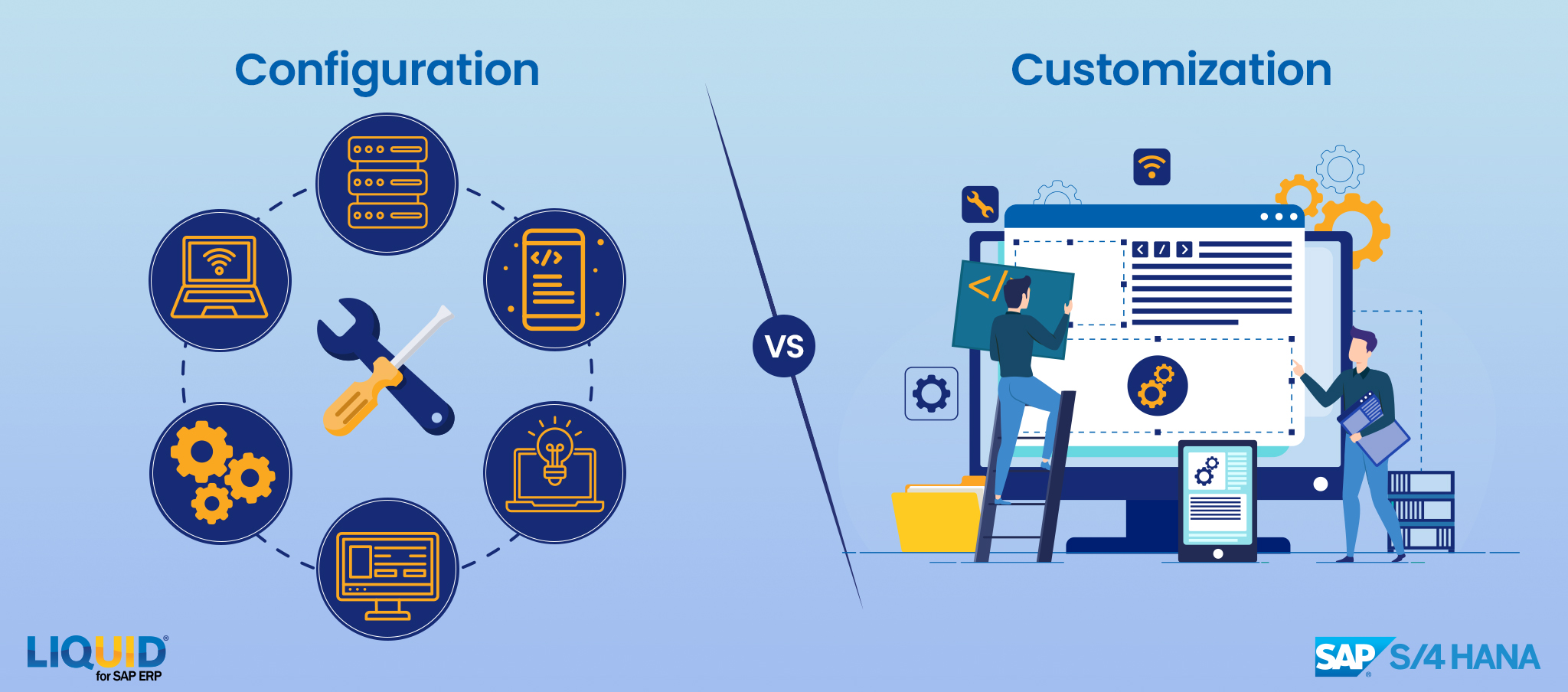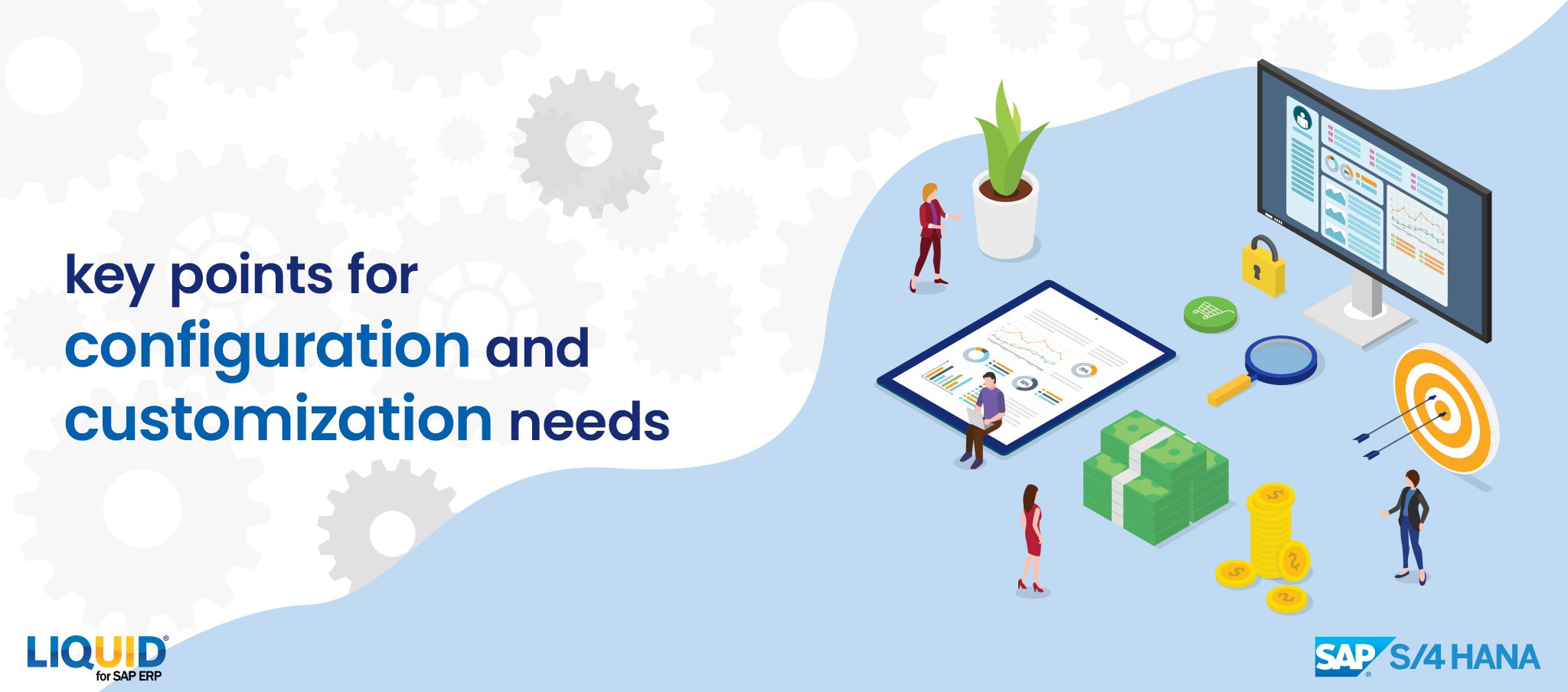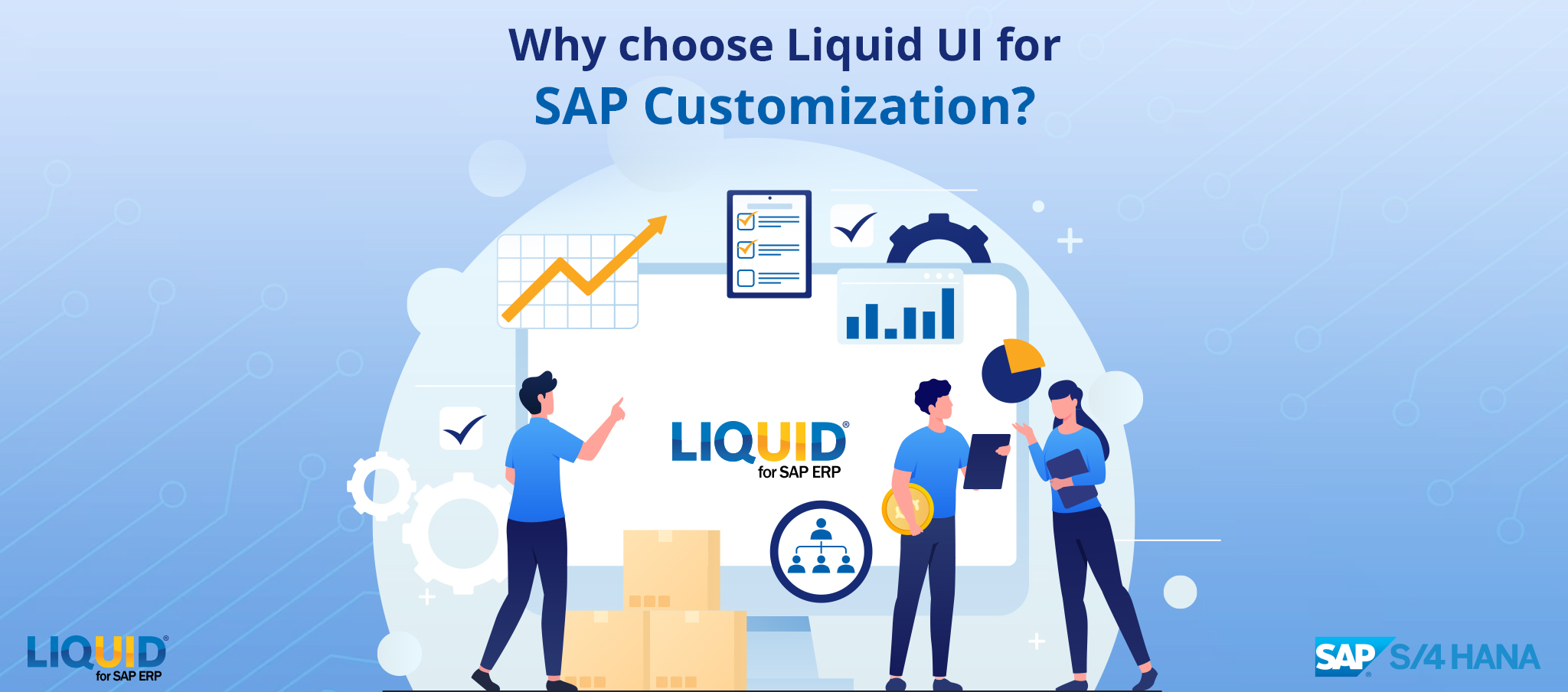
SAP companies often modify their out-of-the-box ERP systems to tailor them to market trends and their specific business needs. SAP configuration and SAP customization are two distinct approaches to this process and can be used to improve the performance of an SAP ERP system. It is imperative to select the appropriate approach for the company's specific requirements.
Understanding the two concepts is important before embarking on an ERP implementation project as it will help you avoid common mistakes, ensure a successful implementation, improve system efficiency, and deliver tangible business benefits.
What is ERP Configuration?
SAP ERP configuration entails adjusting settings and parameters within the enterprise ERP to align with specific business requirements by utilizing built-in tools. It facilitates faster implementation, easier maintenance, and lower costs.
Following are some examples of SAP configuration:
- Assigning processes for increased efficiency: The process assignment to workflows ensures that the correct people are responsible for each step and that change requests are properly routed. This helps to improve efficiency and accuracy, as well as prevent errors and delays.
- Business Specific Solutions Client-specific solutions ensure that information is accurate and solutions are tailored to the client's business needs.
What is ERP Customization?
SAP customization refers to the process of tailoring your SAP ERP to meet your organization's specific requirements and workflows. While SAP's standard functionalities provide a solid foundation, the software's seemingly limitless capabilities can cause confusion among SAP users, necessitating customization to optimize transactions.
Customization entails modifying the ERP system's code or structure to introduce new or unique functionalities that cannot be achieved through configuration alone.
Following are some examples of SAP customization:
- Automating workflows to improve efficiency and accuracy: Automating business processes to reduce manual touches. For example, automating approval processes for purchase requisitions or invoices.
- Integration: Integrating SAP workflows with other systems and tools to streamline end-to-end processes.
- Simplifying transactions by removing fields and consolidating screens: Simplify the user interface by hiding unnecessary fields and consolidating screens. This makes transactions more user-friendly and efficient.
- Workflow customization: customize workflows to automate business processes
SAP ERP configuration or customization depends on business requirements and balancing existing features with specific needs. ERP configuration and customization are similar but have key differences listed in the following table.
Key differences between SAP ERP Configuration and Customization
|
SAP ERP Configuration |
SAP ERP Customization |
|---|---|
|
Entails adjusting system components to meet the specific needs of a given environment. Languages, currencies, time zones, and other parameters must be configured. |
Customization costs vary based on the specific business requirements and future upgrades.
|
|
Customization costs vary based on the specific business requirements and future upgrades.Works within the existing framework of SAP, using the standard tools and features provided by SAP to modify the system behavior. |
|
|
Works within the existing framework of SAP, using the standard tools and features provided by SAP to modify the system behavior. |
Customization extends the SAP system's functionalities beyond what is provided by standard SAP. |

ERP Configuration Is Essential
Configuring your ERP system is one of the most crucial steps in the process. This entails modifying the parameters to meet your company's financial, linguistic, shipping, and customer-facing requirements. ERP configurations can recognize revenue based on a specific set of criteria, such as a geographic unit or product line. Most configurations survive software updates, however, certain customizations may not.
ERP Customization Optimizes Your System
ERP customization can be extensive, including company-specific task management, third-party software, and other features. It customizes ERP systems to meet specific requirements and implements specific functionalities, thus offering greater flexibility in addressing complex business processes. If you are seeking an experienced ERP configuration and customization company, speak to a Liquid UI expert today for advice on how we can help your company.

Unlike traditional customization methods, Liquid UI doesn’t touch your underlying SAP code, making SAP customization safer and more flexible.
Liquid UI for SAP ERP customization benefits
- Efficiency, an integrated ERP speeds up, automates, and improves the visibility of business processes.
- Flexibility, Liquid UI works on top of the SAP system’s code, allowing retainment of z* transactions.
- Innovation, Liquid UI's custom solutions are more powerful and adaptable to specific business requirements.
- Usability, an ERP designed to work in tandem with your existing software ecosystem ensures a more pleasant user experience.
What are the common challenges with ERP configuration and customization?
Both approaches have advantages and disadvantages that are specific to the business. With regards to the disadvantages, ERP configuration may be inexpensive, but inconsistent configuration can increase costs, manpower, and complexity.
On the other hand, customization can be complex and requires comprehensive planning and analysis of the current system. This complexity requires skilled professionals well-versed in coding, testing, and system integration.
While ERP configuration and customization offer tailored solutions, they require careful consideration and expertise.
Conclusion
To stay competitive, business owners must adapt to new practices and technology. Consider collaborating with Liquid UI, which provides tailored SAP ERP customization solutions and can reimagine your SAP without changing a single line of code.





